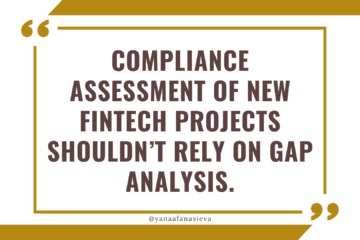What You Need to Know About MICA Regulation In A Nutshell
The Markets in Crypto-Assets (MiCA) Regulation was finally adopted during the spring of 2023 and is expected to come into force on December 30, 2024.
Regulation (as opposed to a Directive) means direct application (without the countries having to ratify it), it will still require local regulators to create domestic requirements, circulars, guidelines, application forms, and other formalities so that it becomes clearer what needs to be done.
What is new and significant about MiCA:
- It defines categories of crypto assets (types of tokens) and clarifies requirements for issuing and offering each type of token.
- It defines license categories for crypto services and defines the scope of each license category and eligibility criteria for licenses to be granted.
- It outlines compliance and governance requirements for crypto assets operations (capital requirements, AML, reporting, customer funds segregation, consumer protection, disclosures, audits, etc.).
- It makes crypto licenses in the EEA passportable.
- It defines requirements and exceptions for issuing and listing/offering tokens.
What are the token categories?
- Asset-referenced tokens including crypto-assets that are pegged to a fiat currency or other underlying asset. Please note, that this group includes security tokens, stablecoins, and e-money tokens.
- Utility tokens (defined as crypto-assets that are used to access a particular service or platform).
What I don’t like about MICA?
- I don’t like the definition of a utility token: “utility token means a type of crypto-asset that is only intended to provide access to a good or a service supplied by its issuer”. I don’t like this definition because, for example, ETH or even BTC can be used to purchase a lot of different assets, from pizza to NFTs, that are clearly not issued by the issuer of the token, which means that we have a large group of tokens that don’t fit into any of the provided definitions under MICA.
- The future of DeFi in Europe is uncertain. It is not clearly defined how to distinguish DeFi from CeFi and as a result, it may not be clear who needs to seek authorization.
- Staking rewards are generally not allowed. In general, interest payment or any other rewards linked to timing are directly forbidden for asset-referenced and e-money tokens. Theoretically, there is no such prohibition for utility tokens, however, the definition of the utility token implies that it can only be used to grant access to the services or goods of the issuer.
- Grandfathering provisions for existing tokens that are already publicly offered are missing. Exchanges and platforms are expected to either obtain the MICA-compliant White Paper from the issuer of each token or to prepare and publish the White Paper for each token they offer (including providing certain assurances about the projects and risks that are very hard to make for somebody else’s project or protocol.
- There is an obligation to prevent manipulation and market abuse, however, it is not defined how to do it.
- Requirement to perform customer funds audit every 6 months. In my opinion, it should be a part of the general financial audit and capital adequacy requirements.
- The requirement to publish disclosures on the adverse impacts on the climate and other environment-related adverse impacts of the consensus mechanism used to issue the crypto-asset.
What I like about MICA:
- A decently clear scope of licensable services.
- A decently clear scope of the White paper.
- Alignment between E-money regulations, MIFID, PSD2, and underlying tokens that are either securities or e-money.
- Requirements to safeguard customer funds and general consumer protection and investor protection requirements.
- Prohibition to be a custodian of your own token.
- Permission to invest customers’ crypto funds under certain conditions. Issuers of asset-referenced tokens that invest a part of the reserve of assets shall only invest those assets in highly liquid financial instruments with minimal market risk, credit risk, and concentration risk. The investments shall be capable of being liquidated rapidly with minimal adverse price effects. Units in an undertaking for collective investment in transferable securities (UCITS) shall be deemed to be assets with minimal market, credit, and concentration risk … All profits or losses, including fluctuations in the value of the financial instruments … and any counterparty or operational risks that result from the investment of the reserve of assets, shall be borne by the issuer of the asset- referenced token.
DAO in Europe will have a hard time (remember, many of them have huge treasury and are often token issuers):
- A person shall not provide crypto-asset services, within the Union, unless that person is: (a) a legal person or other undertaking that has been authorized as a crypto-asset service provider; or (b) a credit institution, central securities depository, investment firm, market operator, electronic money institution, UCITS management company, or an alternative investment fund manager that is allowed to provide crypto-asset services.
- Crypto-asset service providers shall have a registered office in a Member State where they carry out at least part of their crypto-asset services. They shall have their place of effective management in the Union and at least one of the directors shall be resident in the Union.
- … other undertakings that are not legal persons shall only provide crypto-asset services if their legal form ensures a level of protection for third parties’ interests equivalent to that afforded by legal persons and if they are subject to equivalent prudential supervision appropriate to their legal form.
Hopefully, you find this summary helpful. Please let me know if you have questions!
Start listening to this episode on the Compliance That Makes Sense podcast – Click here!

P.S. Did you know that my FinTech Startup Compliance Pro Certification program provides you access to over 40+ compliance policies and documentation templates, 15 compliance project management training for all essential compliance projects any FinTech startup may need (including implementation plans for each of them), and 5 dedicated workshops and coaching sessions helping you navigate through most critical decisions and uncertain times). Check it out!



